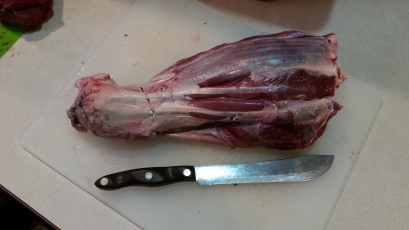I recently came across the Japanese word Shokunin in an article. Further digging uncovered how it is also understood as the spirit of Shokunin. It means craftsmanship, however it is much more than that; one of the essential components of it is to make something for the joy of making it, and to do it carefully, beautifully, and to the best of your ability.
I have pondered this concise, succinct mindset and “spirit” of how things are done, and done well, with examination and purpose. While perhaps a bit of a stretch, I think this idea has a place in hunting, or perhaps a different way we approach the hunt.
An obvious place for Shokunin is practice. Whether at the range with a bow or on the bench with rifle in hand, the work that goes into practice requires care, examination and frankly, spirit. Some may scoff at that, but when I finally get in the groove with my bow, and have attained that perfect level of focus and awareness, it literally feels like I cannot miss the bullseye. The concentration, the drawing of the bow and that anticipation of finding the target and settling the pin on it is a very real thing. Breathe. Focus. Relax your bow hand. Squeeze the trigger. The opposite is also very true – when I rush the shot, or am distracted and scattered, I am not working in the spirit of Shokunin. Frustration builds and a cascade of micro-errors occur, compounding with each shot, and the result is poor shooting. Perfect practice makes perfect…
The other area that for me resonates loudly is after the shot on a successful hunt. The process of “field dressing” (I have always found that phrase odd) is something that requires a high level of mastery and discipline and attention to detail. I recall one of my first solo hunts, staring down at a large whitetail buck in the snow. With the sun fading fast, I had to get to work and quickly get this animal broken down and off the mountain. The challenge with this is you are not in a kitchen, you don’t have good lighting or a set of knives and steels at your disposal. It is usually cold, messy work with poor light, and a very unruly load rolling around on a slippery or steep slope. When all of that is factored in, I am always very impressed to see hunters deftly turn that animal into clean portions, bagged and ready for the pack out.
I sincerely enjoy this process, and gain valuable bits of knowledge each time I tag an animal and break out the knife and game bags. The long, linear cuts required to free the backstraps or the more straightforward actions of butchery to de-bone a large hind quarter all demand focus and skill, detail and strength. Hoisting an 80-pound rear quarter from an elk is hard work, no matter who you are. Along with clean technique, a hunter must work with speed in mind; heat, predators or the dread of a storm looming keeps the clock ticking. But with speed one must maintain their focus – it is not a time to hack and slash, cutting away anything that looks like meat, and stuffing it into gamebags like harried bank robbers on a heist.
The next step, and one that perfectly aligns with Shokunin is when the heavy packs are shrugged off at the trailhead and the large chunks and loins are turned into those recognizable and delectable cuts – roasts, steaks of all kinds, burger. My favorite ritual is prepping the backstraps of an elk, and removing every bit of silverskin and fat or gristle. What is left is a deep ruby-red cylinder of meat, one that takes the blade easily, with thick medallions an inch or more thick falling away. With four to a pack and wrapped tightly in plastic and butcher’s paper, they stack like gold bricks in the freezer. I always save one medallion to prepare after I am finished, washing up cutting boards and knives, putting away the tools of the trade. A dollop of butter in a cast-iron skillet bubbles and heats through, shimmering from the flame. A bit of sea salt, pepper and a minute each side delivers a piece of meat unlike anything that could ever come from a feed lot or farm – it is tender, earthy and so flavorful. Some will say “gamy” and I call BS on that. It tastes like an elk. It tastes wild and familiar at the same time. It is something that must be experienced to truly enjoy. And to get to that experience it can be broken down into these steps, hopefully aligning as best as I can with Shokunin:
– Perfect Practice
– Perfect Shot
– Skillfully Quartering and De-Boning
– Thoughtful Prep at Home
– Cooking with Care and Passion
“For the joy of making it, and to do it carefully, beautifully, and to the best of your ability.”
That is the goal.
